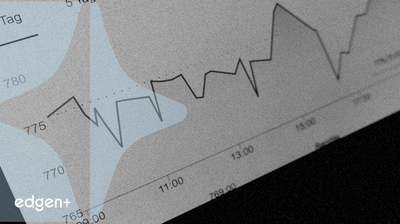Related News

Lithium Carbonate Surges Past 100,000 Yuan/Ton in China Amid Supply Disruptions
## Executive Summary The most-active lithium carbonate futures contract on the Guangzhou Futures Exchange has rallied past the 100,000 yuan ($14,065) per ton threshold, marking a significant price movement in a market still grappling with long-term oversupply. This surge, representing a new high since June 2024, is not fueled by a fundamental shift in demand but is instead a reaction to supply-side disruptions, including production halts and strategic forecasts from major producers. The event highlights the inherent volatility in the lithium market, where short-term tightness can temporarily overshadow broader supply gluts, creating a complex and uncertain environment for investors and electric vehicle (EV) manufacturers. ## The Event in Detail The November 2025 lithium carbonate contract has seen its price increase by over 70% in recent months, culminating in its breach of the psychologically significant 100,000 yuan/ton mark. This rally sharply contrasts with the commodity's performance over the last year, where prices crashed by 80% from their peak in 2022 due to slowing global EV sales and the phasing out of subsidies. The immediate catalyst for the reversal appears to be supply-side factors, including a production halt that removed approximately 65,000 metric tons of lithium carbonate equivalent—roughly 6% of global supply—from the market. This has created immediate market tightness, overriding, for the moment, the larger narrative of oversupply that is expected to persist into 2025. ## Market Implications Despite the sharp increase in lithium costs, EV manufacturers have remained notably silent. This is attributed to several factors, including an existing oversupply of lithium carbonate, sufficient inventories, and the ability to reactivate idle production capacity if needed. Furthermore, major battery producers like **CATL** have developed integrated layouts that provide a buffer against short-term price swings. However, a sustained rally could pressure margins, particularly for mid- to high-end EVs, and may accelerate a shift from price-based competition to value-based competition in the auto sector. Compounding these dynamics, China introduced new export restrictions on advanced lithium-ion batteries and key materials in October, a move poised to impact global supply chains. ## Expert Commentary Market analysts emphasize the disconnect between the current price rally and underlying market fundamentals. One report notes, *"The lithium market's dramatic reversal from oversupply to potential shortage conditions demonstrates how quickly commodity fundamentals can shift, particularly when supply disruptions coincide with accelerating demand growth in critical sectors like energy storage and electric vehicles."* Adding to a bullish long-term outlook, the chairman of **Ganfeng Lithium Group Co**, a major Chinese producer, forecasted demand growth of 30% or even 40% for the metal in 2026, which he stated could drive lithium carbonate prices above 150,000 yuan or even to 200,000 yuan a ton. ## Broader Context China holds a commanding position across the global lithium supply chain, giving it significant influence over pricing. Coordinated policy between Chinese producers and government agencies can amplify price movements, as seen in the current scenario. The market is also being shaped by technological shifts, such as the growing popularity of lithium iron phosphate (LFP) batteries in EVs, which has channeled most demand toward lithium carbonate. The current situation underscores the tension between short-term, supply-driven price shocks and the longer-term outlook of a market that is structurally oversupplied. Investors are closely monitoring Chinese regulatory developments, energy storage deployment rates, and progress on alternative supply sources to navigate the sector's volatility.

U.S. Non-Farm Payrolls Beat Expectations in September; Unemployment Rate Rises to 4.4%
## Executive Summary The latest U.S. labor market report presents a mixed economic picture, with non-farm payrolls for September showing a job gain of 119,000, substantially exceeding the consensus forecast of 51,000. However, this sign of labor market strength was contrasted by a separate household survey showing the unemployment rate rising to 4.4%, a four-year high and slightly above the 4.3% that economists had anticipated. ## The Event in Detail According to data from the U.S. Bureau of Labor Statistics, the 119,000 increase in non-farm payrolls marked a significant acceleration from the prior month's revised figures. This headline number defied widespread expectations for more moderate job growth. Alongside the employment figures, average hourly wages registered a modest increase of 0.2%, a critical data point in assessing inflation trends. Contradicting the payroll data, the unemployment rate ticked up from 4.3% in August to 4.4% in September. This increase suggests that despite robust hiring in certain sectors, more individuals were actively seeking work but unable to find it, pointing to potential underlying slack in the labor market. ## Market Implications The conflicting data points introduce significant uncertainty for financial markets and Federal Reserve policy. A stronger-than-expected job creation figure typically supports a more hawkish monetary policy stance, as it suggests the economy can withstand higher interest rates. It can be viewed as a positive indicator for economic resilience. However, the simultaneous rise in the unemployment rate complicates this interpretation. It provides ammunition for officials who may advocate for a more cautious or dovish approach, arguing that the labor market is not as tight as the headline payroll number would suggest. This ambiguity may lead to increased volatility as investors recalibrate their expectations for future interest rate decisions. ## Expert Commentary Wall Street economists had largely projected a more subdued figure, with a **Reuters** survey showing an expected increase of only 50,000 jobs. The significant beat on the headline number caught many market participants by surprise. However, some analysts urge caution, noting that initial payroll reports are often subject to substantial future revisions. The initial estimate for benchmark revisions already suggested that job growth in the prior year was weaker than first reported, implying that a single month's data should be interpreted with care. ## Broader Context This jobs report arrives at a crucial moment for the **Federal Reserve**, which is navigating its dual mandate of maintaining price stability and achieving maximum employment. The data offers no clear resolution. While robust job growth could be interpreted as fuel for inflation, a rising unemployment rate signals the opposite. As a result, future monetary policy decisions will likely depend heavily on incoming inflation data to resolve the ambiguity presented by this complex labor market report. The market will now watch for commentary from Fed officials to gauge how they interpret these mixed signals.

Vanke Reports $2.3 Billion Q3 Loss; Secures CNY 30.8 Billion in Shareholder Loans
## Executive Summary **China Vanke Co. Ltd.** (**000002**) is navigating severe financial turbulence, reporting a net loss of 16.1 billion yuan ($2.3 billion) for the third quarter of 2025. In response to mounting liquidity pressure, its largest shareholder, the state-owned **Shenzhen Metro Group**, has provided loans amounting to 30.8 billion yuan ($4.3 billion) year-to-date. However, recent demands for collateral on these loans signal a significant tightening of financial conditions, raising concerns about the stability of one of China's leading property developers. ## The Event in Detail The Shenzhen-based developer's Q3 financial statements revealed a deepening crisis. The reported net loss of 16.1 billion yuan nearly doubled from the same period in the prior year. This was coupled with a 26.61% decrease in revenue, underscoring the impact of a persistent slowdown in property sales. To address its financial obligations, **Vanke** has leaned heavily on its primary shareholder. **Shenzhen Metro Group** has extended a total of 30.8 billion yuan in financing throughout 2025. A recent infusion of 2.2 billion yuan was specifically used to repay a maturing 2.5 billion yuan domestic bond. Critically, this support is no longer unconditional. **Shenzhen Metro** has now requested collateral or pledges for 20.37 billion yuan ($2.86 billion) of its loans, a move that indicates a more stringent and risk-averse approach from its state-owned backer. ## Market Implications The immediate market reaction has been negative, with **Vanke's** bonds reportedly plunging following the news. The demand for collateral from **Shenzhen Metro**, a related and state-owned party, is particularly concerning for investors. It suggests that the perceived risk associated with **Vanke** has escalated to a point where even its most significant supporter is seeking to mitigate its own exposure. This development may have a chilling effect on the broader real estate sector, as it implies that state-backed lifelines may now come with stricter terms that do not fully insulate companies from market pressures. ## Expert Commentary Financial analysts observe that the shift in **Shenzhen Metro's** lending policy is a pivotal moment. The requirement for collateral on existing and future loans is seen as a clear signal of heightened risk assessment. Observers note that while the provision of loans demonstrates continued support, the new terms reflect a pragmatic approach to asset protection, even for state-owned enterprises. The sharp revenue decline is cited by market experts as definitive evidence that the downturn in China's property market continues to challenge even the most established developers, diminishing their capacity to generate operational cash flow. ## Broader Context This event places **Vanke**, once considered a financially robust developer, squarely within the ongoing Chinese property debt crisis. The company's struggle, and the evolving nature of the support from its state-owned shareholder, highlights a new phase in the government's management of the sector-wide deleveraging. The move away from unconditional bailouts toward more structured, collateralized lending may represent a new playbook for managing distress among major developers. This strategy aims to prevent outright collapse while simultaneously imposing a degree of market discipline, a balancing act that will have significant long-term implications for China's real estate and financial markets.
